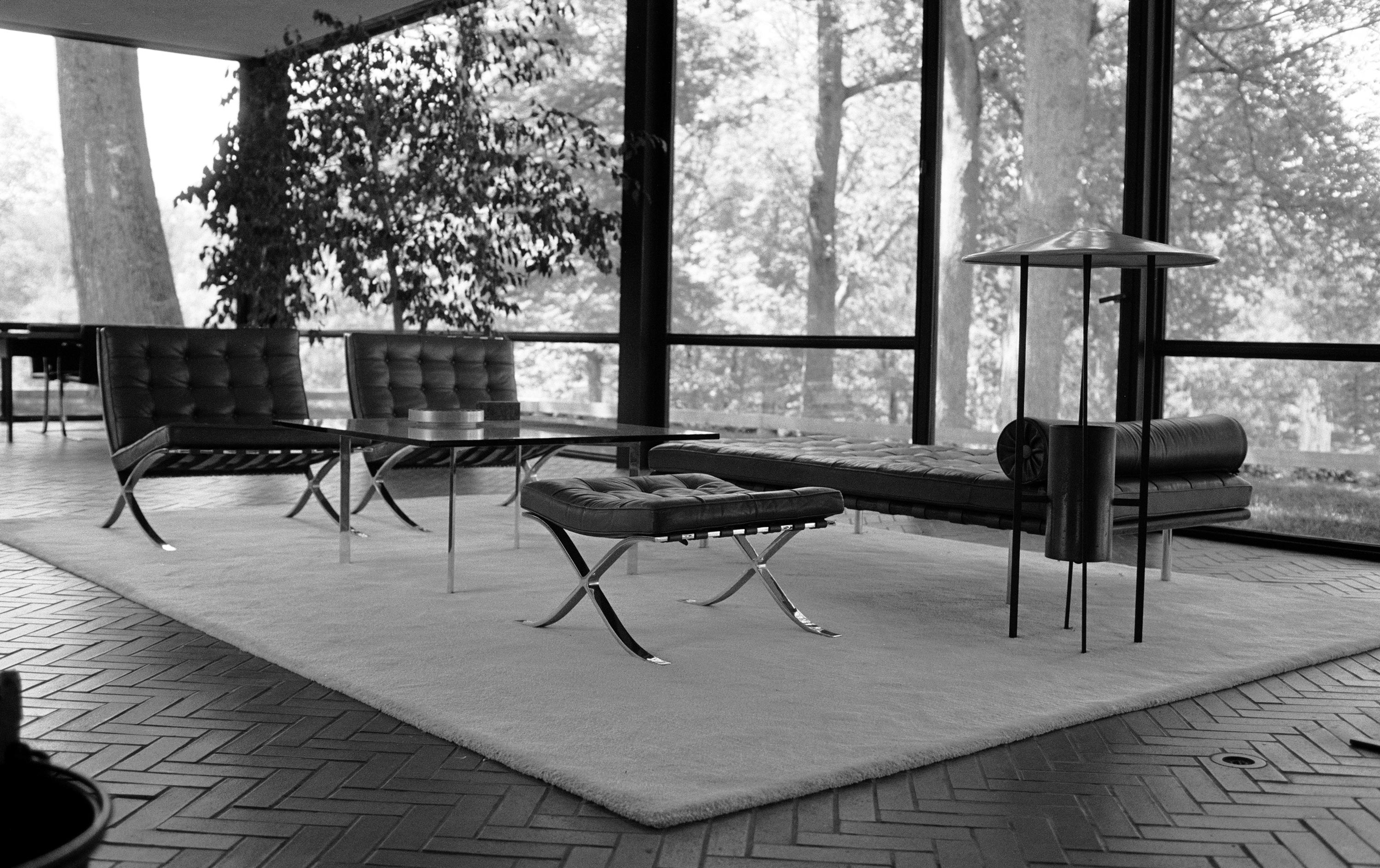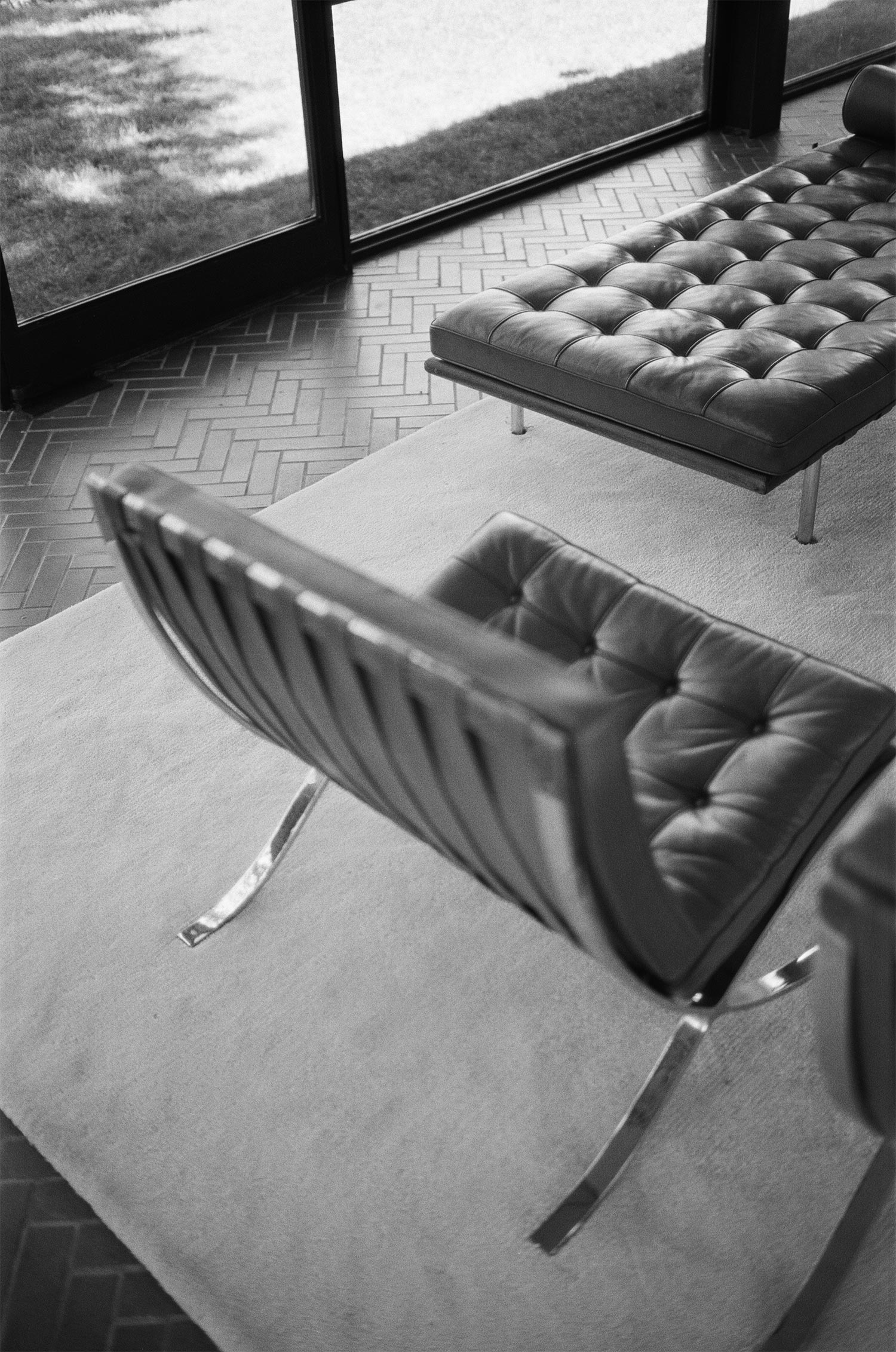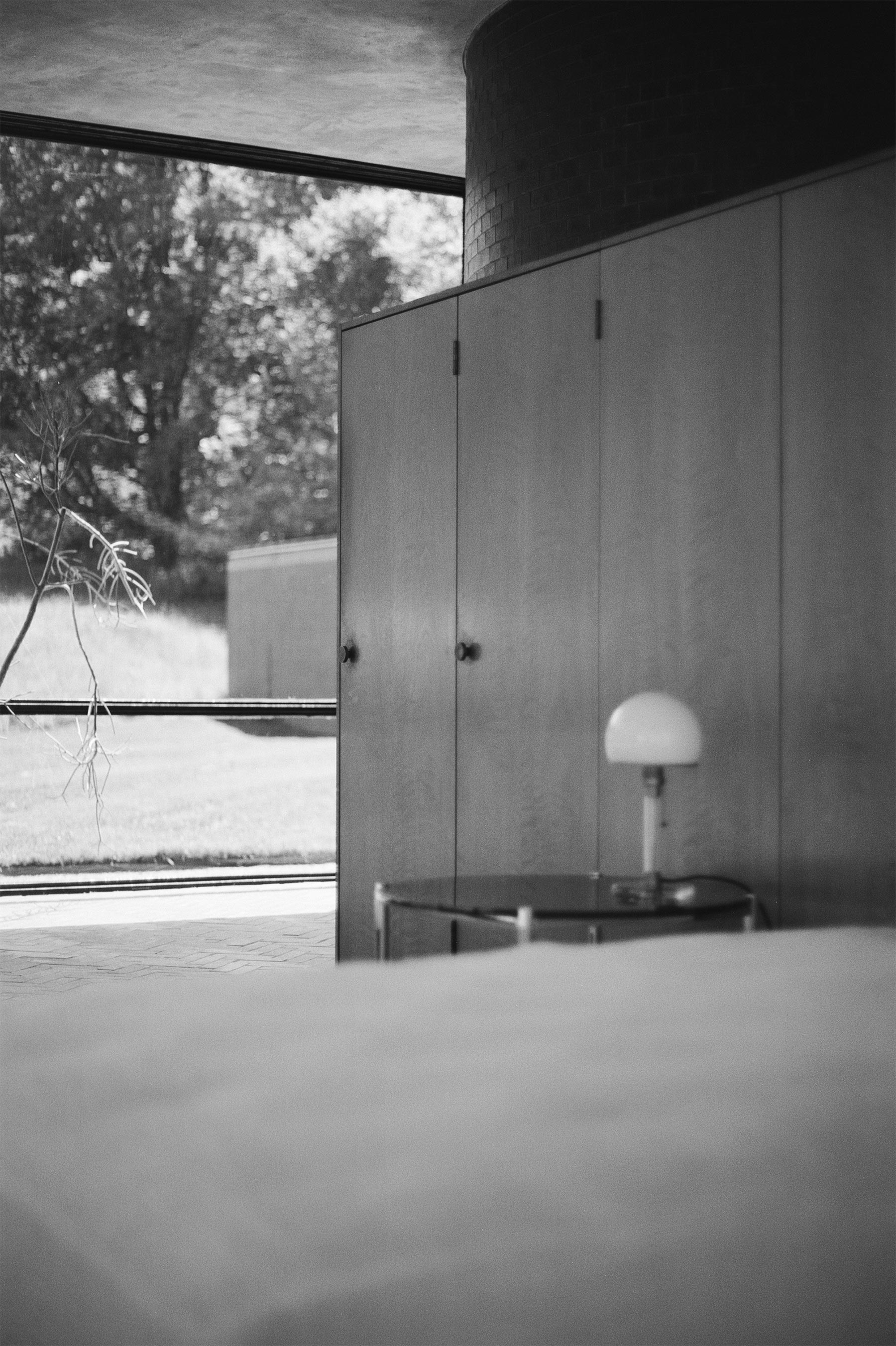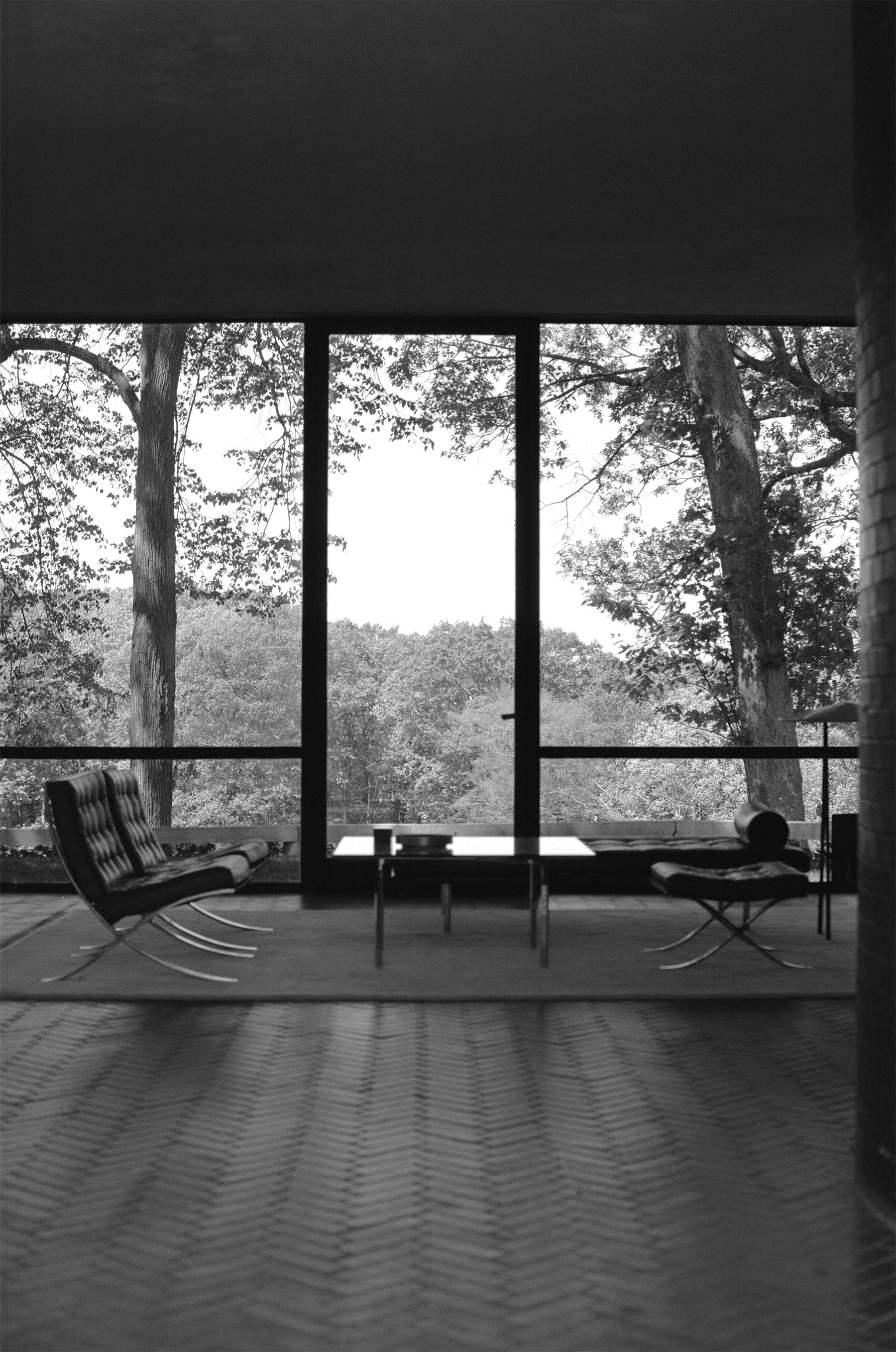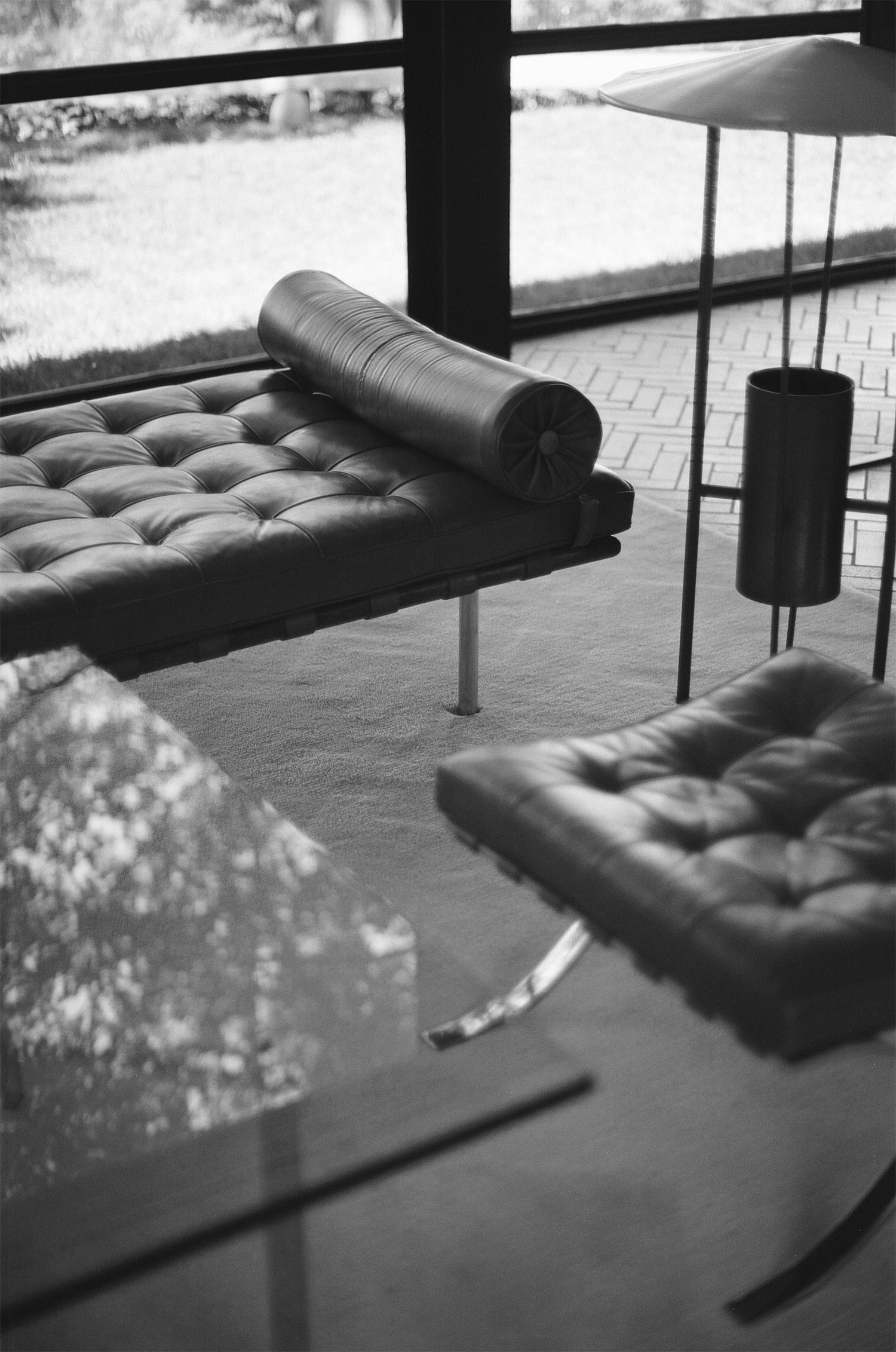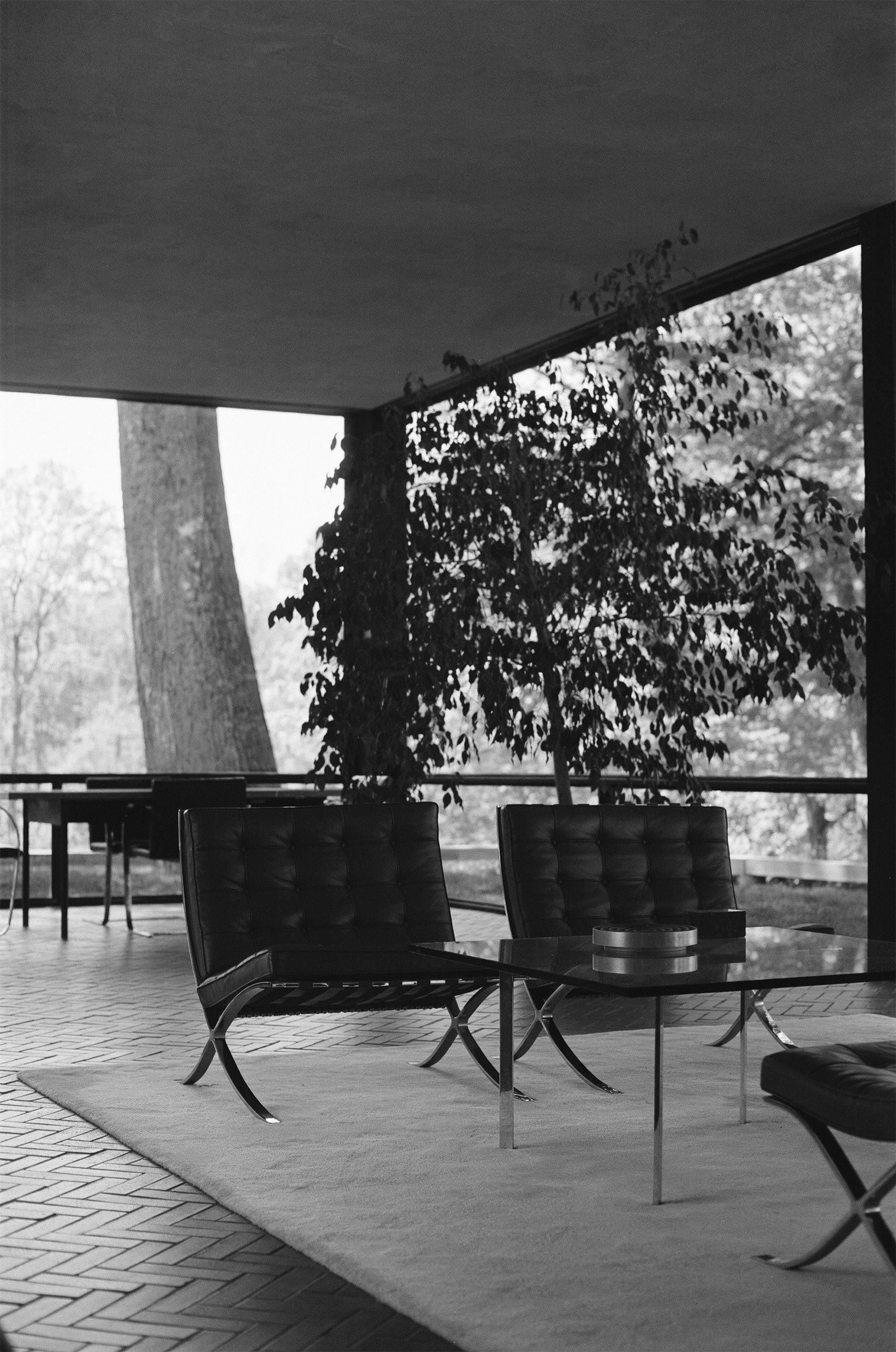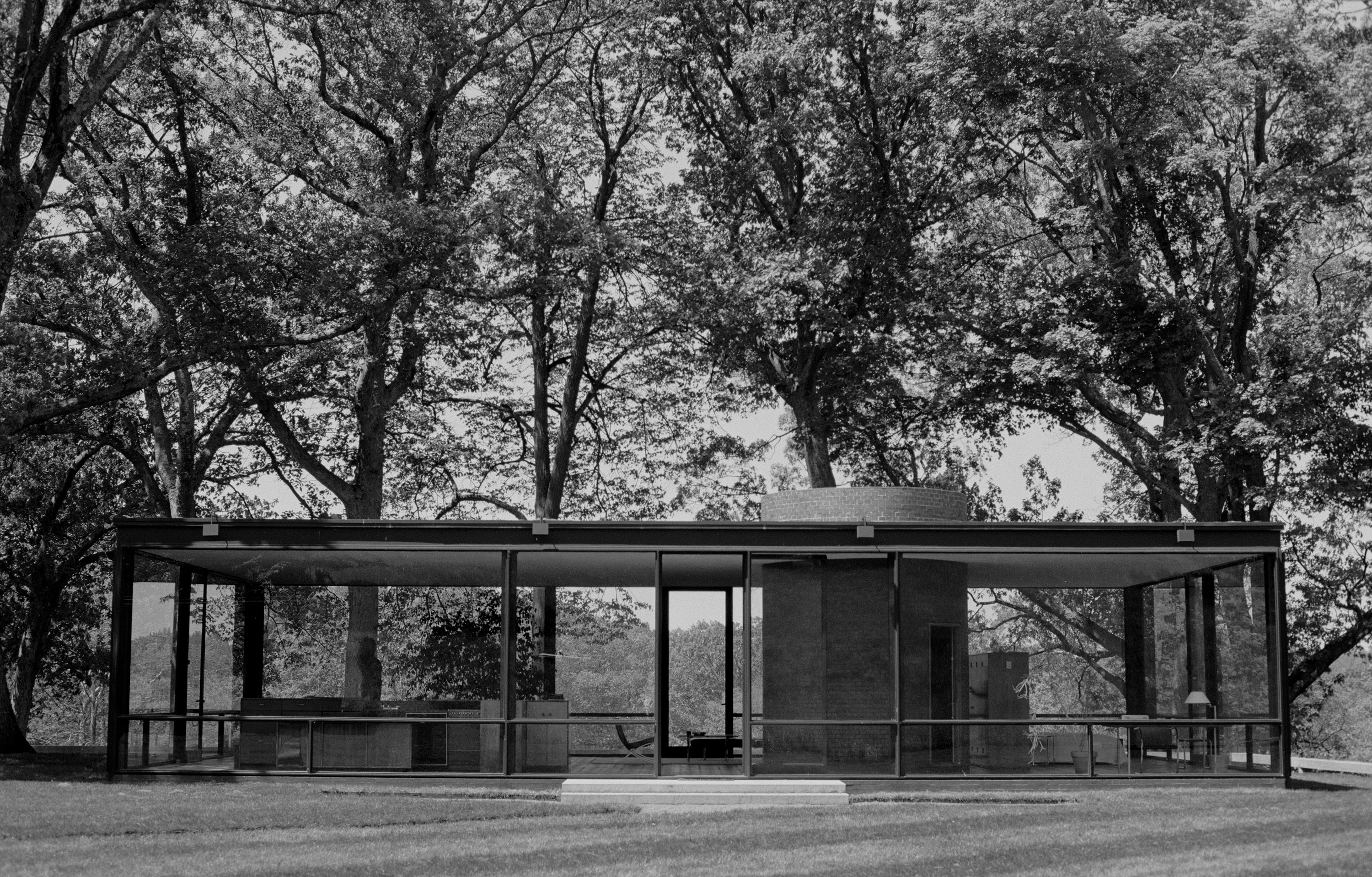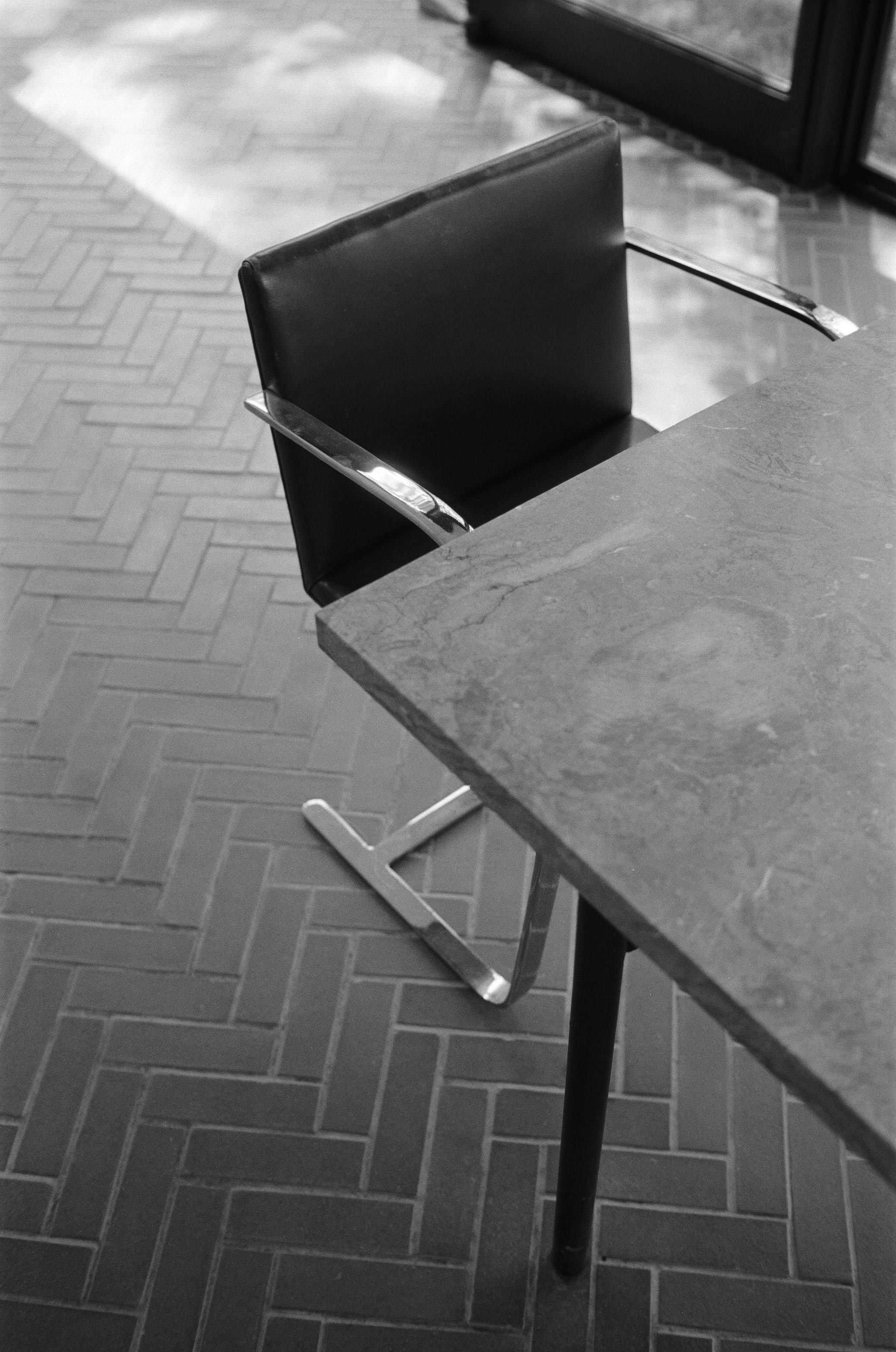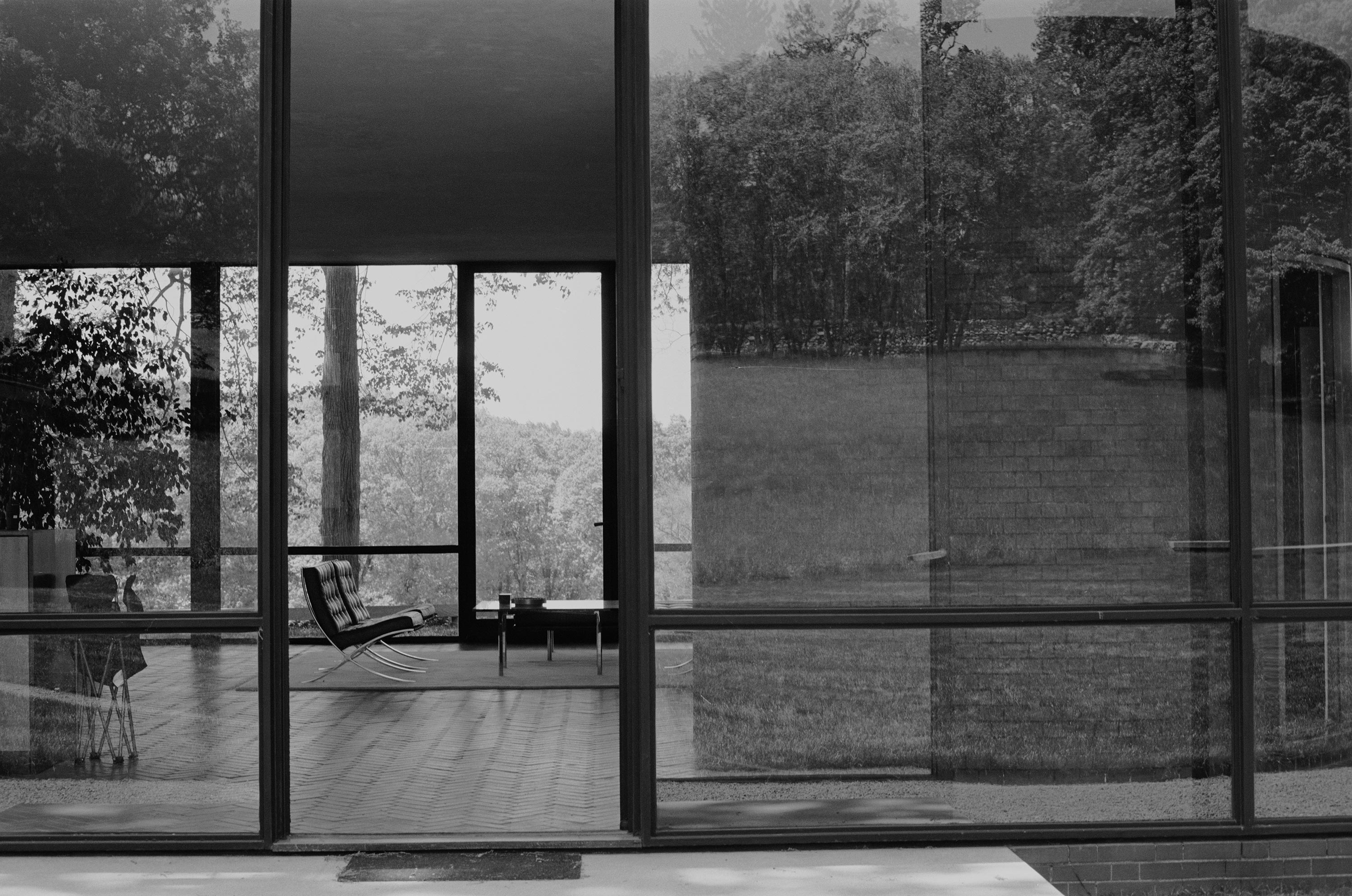REFLECTING
TRANSPARENCY
Philip Johnson’s Iconic Glass House
In the realm of modern architecture, few structures have left a mark as profound as the Glass House, a masterpiece conceived by Philip Johnson. Located in New Canaan, Connecticut, the Glass House was born out of Johnson’s aspiration to create a harmonious dialogue between man-made constructions and the natural world.
On an extensive site, he had ten pavilions built for himself and his partner, the art collector David Whitney. The buildings were created over a period of fifty years, the most famous of which is the Glass House, designed and built in the 1940s.
shot on location in NEW CANAAN, CONNECTICUTUNITED STATES OF AMERICA
on 35 MILLIMETER FILM
THE GLASS HOUSE WAS BORN OUT OF JOHNSON’S ASPIRATION TO CREATE A HARMONIOUS DIALOGUE BETWEEN man-made CONSTRUCTIONS AND THE natural WORLD.
The Glass House started because of the land that was there. […] And it was all conditioned by the landscape itself. In finding that little knoll, I was in the middle of the woods in the middle of the winter and I almost didn’t find it. I found a great oak tree and I hung a whole design on the oak tree and the knoll because of this place.
— Philip Johnson
The structure, made primarily of glass and steel, redefines the relationship between indoor and outdoor spaces and creates a new architectural language. For Johnson, architecture should no longer be a shelter, but also a way of transforming the environment into an integral part of the experience. In that way, the building becomes connected to nature. The ethereal boundary between the interior and exterior of the glass house invites nature to actively participate in the life within its walls. The use of glass walls without curtains or blinds enhances the feeling of living in the midst of the landscape and goes beyond the conventional notion of domesticity.
In addition, the Glass House is a perfect example for a study in geometry and minimalism. Its rectangular shape is carefully aligned with the cardinal points. This orientation reinforces the connection between the architecture and the natural rhythms of the sun’s movement throughout the day. The simplicity of the design, free of unnecessary ornamentation, underscores Johnson’s commitment to the purity of form and function. This is also highlighted by the open floor plan. Despite the absence of walls, these areas are still called rooms. There is a living room, dining room, kitchen, bedroom, bathroom, and entryway. Furnishings in the Glass House are from Johnson’s New York apartment, designed by Mies van der Rohe in 1930, including the now-iconic daybed that Mies designed specifically for Johnson.
shot on location in NEW CANAAN, CONNECTICUT
UNITED STATES OF AMERICA
on 35 MILLIMETER FILM
